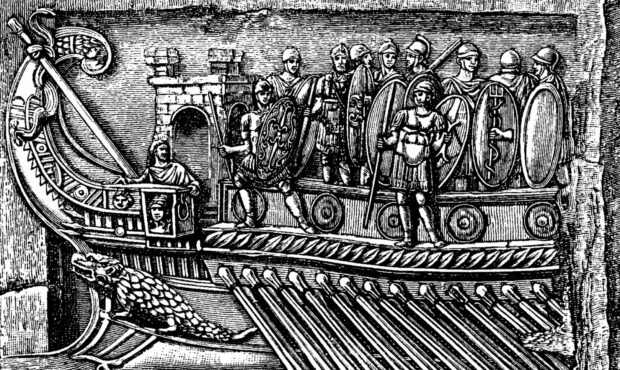
The invading Romans might have built more roads but the rodents on board made inroads of their own, according to scientists detailing the arrival of black rats in Britain.
Tiny skeletons dating back thousands of years are offering archaeologists insight about how the rats arrived as stowaways on Roman galleys.
Then after the first influx died off when volcanic eruptions in 536AD triggered a three-year winter, they returned 250 years later aboard Viking longships.
Researchers from across Europe have now joined forces in an international collaboration to find archaeological remains of the black rat. They have dated the remains they have found as from Roman times, right up to the 18th Century.
Dr David Orton is among the specialists tracing the arrival and survival of the rats and said ships were key to their migration.
“The rats would be brought here, either by invaders, traders or shipwrecks and were at their happiest on wooden ships,” said Orton, of York University.
“We know that rats spread along with humans, and we suspect that the expansion of the Roman Empire could have been such an event.
“Archaeological research shows that black rats arrived twice, probably firstly with the Romans’ successful invasion in 43AD.”
Composer and academic solves historical puzzle to bring the sounds of Ancient Rome to life
Dr Stephen Harrison, senior lecturer in Viking archaeology at Glasgow University, told The Sunday Post: “Rats change after the Viking age. Indeed with each wave of invaders we got their wildlife and fauna.
“There has been some good work on the genetic legacy of Scandinavian settlers in Scotland with humans and what makes David Orton’s work really interesting is the discovery of the accidental immigration of animals.
“You get this transformation and change which David is exploring.”
Orton added: “Romans came with grain, most likely linked to army provisions or trade. Rat skeletons have been found by Roman villas and settlements suggesting they lived in close proximity.
“The rats disappeared not long after the Romans left and the trade necessary for military provisions died down.
“They then reappear with the arrival of the Vikings and trading ships. We look at rats in the context where they are found and use carbon dating to tell the age of the tiny skeletons.”
Both Roman and Viking armies invaded Scotland, the Romans going as far as Perthshire and further north, while the Vikings settled on Orkney and Shetland, the Western Isles and parts of the mainland.
The name of Scalpay in the Western Isles comes from the Norse for “boat-shaped island” while Ulva, by Mull, is Norse for “wolf”, or “Ulfr’s island”.
The teams of researchers working across 20 countries believe that by tracing common ancestors through the DNA in skeletons, they can also tell how black rats spread to Northern Europe. This information has enabled them to say with great certainty that the black rat colonized Europe in two distinct waves.
DNA analysis of rat bones allows scientists to chart the spread of the rodents and, from around 1,000 years ago, researchers can see how the black Roman rat, Rattus rattus, spread throughout Europe, along with humans.
The black rats are all believed to have come directly from common ancestors with bones from the British Isles in the north-west to Serbia in the south-east of Europe revealing similar genes.
Black rats brought by the Vikings were in turn overcome by larger brown rats called Rattus norvegicus. They are said to have originated in Norway, after travelling north from China.
The black rat’s last stand was on the Shiant Isles in 2018 because they preyed on native birds’ eggs. They are believed to have arrived in the Outer Hebrides following a shipwreck.

Enjoy the convenience of having The Sunday Post delivered as a digital ePaper straight to your smartphone, tablet or computer.
Subscribe for only £5.49 a month and enjoy all the benefits of the printed paper as a digital replica.
Subscribe